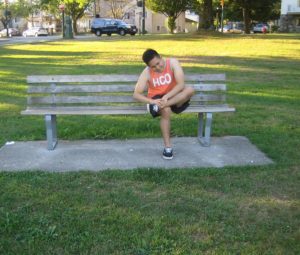A calf strain involves a tear on the muscle fibers at the rear part of the lower legs and range from minor to severe.
What are the signs?
The indications of a calf strain vary significantly but typically involves abrupt sharp pain at the rear part of the lower leg. The calf muscle is often tender at the site of injury along with bruising and swelling that can manifest within hours or days.
Management of a calf strain
When caring for a calf strain, the PRICE method can be used.

- Cold therapy and a compression wrap are used to control the internal bleeding, lessen the pain and swelling. An ice pack is applied for 10-15 minutes every hour initially and later reduced as the swelling and pain subsides.
- The individual should take time to rest the affected muscle. If the muscle is still used, it can prolong the healing process. A compression bandage or calf support can be used to protect the muscle and lessen the swelling.
- A heel pad can also be used to elevate the heel minimally and slightly shorten the calf muscle to relieve some strain from the muscle. Position the heel pads in both shoes because one leg can end up longer than the other, thus resulting to other issues.
- Once the pain has settled, start gentle stretching and strengthening exercises. These stretching exercises can be started once the initial acute stage has passed and the pain allows. This can be done a few days or longer depending on the seriousness of the injury.
- In the late phases, a foam roller can be used to stretch the fascia or connective tissue surrounding the muscle. The affected leg is rolled over the roller throughout the full length of the muscles from the ankle up to beneath the knee and back again.
More Information / Disclaimer
The information posted on this page on a calf strain is for learning purposes only. Learn to recognize the signs and how it is managed by taking a standard first aid course with Toronto First Aid.
